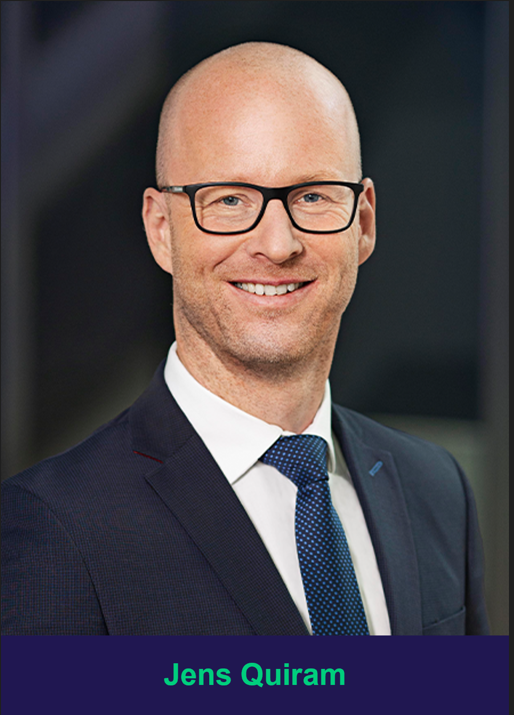22 Jan 2024
Eurex
A hybrid approach to FX efficiency
Regulatory changes are increasing the cost of managing OTC FX portfolios. Eurex’s Jens Quiram, Global Head of FIC Derivatives and Repo Sales, and Lee Bartholomew, Global Head of FIC ETD Product Design, explain how a hybrid approach is helping banks and buy-side clients leverage the benefits of listed, cleared FX derivatives while maintaining bilateral OTC relationships as a better way to manage exposures.
How can FX futures help protect FX portfolios from the increasing costs associated with SA-CCR and UMR?

Jens Quiram: These two sets of rules made exposure management a crucial market challenge. With SA-CCR (Standardized Approach for Counterparty Credit Risk), banks are facing increasing capital costs – especially for directional and uncollateralized portfolios. In addition, short-dated OTC contracts, which were previously excluded under the Current Exposure Methodology framework, are now included in the SA-CCR calculation and make up the majority (98%) of the daily USD 7.5 trillion notional market, so reducing exposures becomes imperative.
While UMR (Uncleared Margin Rules) did not cause a big cliff-edge event in which FX moved decisively from uncleared to cleared, it compounded concerns around exposures as well as liquidity and collateral management. This naturally led buy-side firms to look at ways to reduce exposures in their uncleared portfolios to below relevant thresholds. One of the alternatives is cleared listed FX products. As most market participants already have the infrastructure in place to trade fixed income or equity index futures, they can often re-use this infrastructure for FX futures as well.
As part of this solution, a hybrid approach between OTC FX and listed markets offers traders the best of both worlds. You can maintain your bilateral relationships with the benefit of OTC liquidity, then transfer the execution into the exchange product at the CCP. This eliminates bilateral credit risk and enables capital and margin benefits, making the counterparty credit risk component much more manageable.
We and our clients see this as a significant part of the future of the FX market and I believe it will be a compelling addition to our listed FX products growth story.
As OTC traders explore listed derivatives, what are some of your observations?

Lee Bartholomew: An interesting development over the past year or so has been more of an alignment between banks and non-bank liquidity providers (LPs) who have seen how listed products can coexist alongside OTC markets. This is bringing in new participants and helping to facilitate the transition to a more futurized world. We’re seeing a proliferation of portfolio trading – credit ETFs and bonds – by non-bank LPs with embedded hedging requirements, which is naturally growing the ecosystem.
Jens: Market participants increasingly appreciate the combination of off-book liquidity and the central limit order book (CLOB). While the CLOB serves as the “shopping window” of an exchange, FX participants enjoy accessing bank liquidity outside the order book via blocks and EFPs.
Is interest coming from traditional futures traders or those new to listed derivatives?
Lee: We have initially focused on attracting existing FX futures users. Having said that, as FX futures become more relevant, we are seeing traditional OTC clients opting to use listed FX derivatives as a tool to optimize their portfolios, navigate UMR thresholds, manage capital surcharges, and free up credit lines.
FX futures will play an increasingly important part of the buy-side toolkit because they enable portfolio managers and traders to track their data much more efficiently and use it to assess the cost of execution, entry and exit, and alpha-generating strategies. Additionally, there have been big advances around the automation of that originally high-touch business for the buy-side.
Jens: Establishing new markets doesn’t happen overnight. It requires multiple ingredients in the right order and at the right time. It is not just a single bank or market user looking into something new – it’s multi-faceted, whereby different market participants have to make the same decision in parallel to trigger excitement by the next group. This is happening now – we are seeing a number of participants looking for a world that combines OTC with listed FX futures. Our current pipeline of clients is dominated by OTC FX users looking for listed alternatives.
Should banks be looking at FX futures as an additional instrument to offer clients?
Lee: An increasing number of banks are offering “low touch” FX futures solutions, whereby clients execute in OTC FX markets when building an FX futures position in a highly automated fashion. This further enables the FX desk to trade with their clients in a capital efficient manner, even for directional traders and those that have no master agreement or collateral support annex (CSA) in place.
Additionally, banks can maintain and monetize bilateral relationships, while clients benefit from fully electronic workflows.
Eurex offers FX futures via multi-dealer platforms, including 360T, RFQ Hub and Eurex EnLight. Why has this integration been an important part of the product roadmap?
Jens: Our integration with 360T is a perfect example of how we are reducing access hurdles for clients. Besides using the existing Eurex pipes, we integrated our futures into 360T’s systems so their clients can trade our futures face-to-face with the spot market, as well as the forwards and swaps markets. Meanwhile, 360T will be integrating FX futures into its API in 2024 to help banks price these electronically. As demand grows among the buy-side for multi-dealer platforms, we have made FX futures available in RFQ Hub and Eurex EnLight. We are also in discussions with other major FX platforms to integrate our FX futures.
What else is on the Eurex product roadmap for 2024?
Lee: Clients want as much flexibility when choosing products as possible, so we are testing the potential for Flex Futures, which will give OTC FX users the ability to trade off of standard IMM dates. The introduction of new currency pairs like Canadian dollar, New Zealand dollar, and further scope for European pairs is also in sight, and we are looking at reinvigorating our listed options by creating new incentives.
As mentioned earlier, we have a unique value proposition with 360T, so we are exploring opportunities to strengthen the offering through iterative product extensions in and around the core franchise in euro crosses, Scandis, and APAC. Eurex is the gateway to Europe for cleared FX instruments and is on track to achieve its mission to establish a major cleared FX liquidity hub in 2024.
Jens: The roadmap is being driven by providing broader market access. Since buy-side participants need a clearing bank to face the exchange, a big focus for us has been to attract as many clearing members as possible. Over the last 18 months, we have onboarded most of the major clearing banks and so have cleared this access hurdle and can now onboard the liquidity taker community.
Ultimately, the trend towards futurization in FX provides opportunities for the entire clearing and futures industry. Clients gain access to new cleared liquidity sources, while the futures execution and clearing teams within banks see a growing business stemming from the move from OTC to cleared FX futures.
